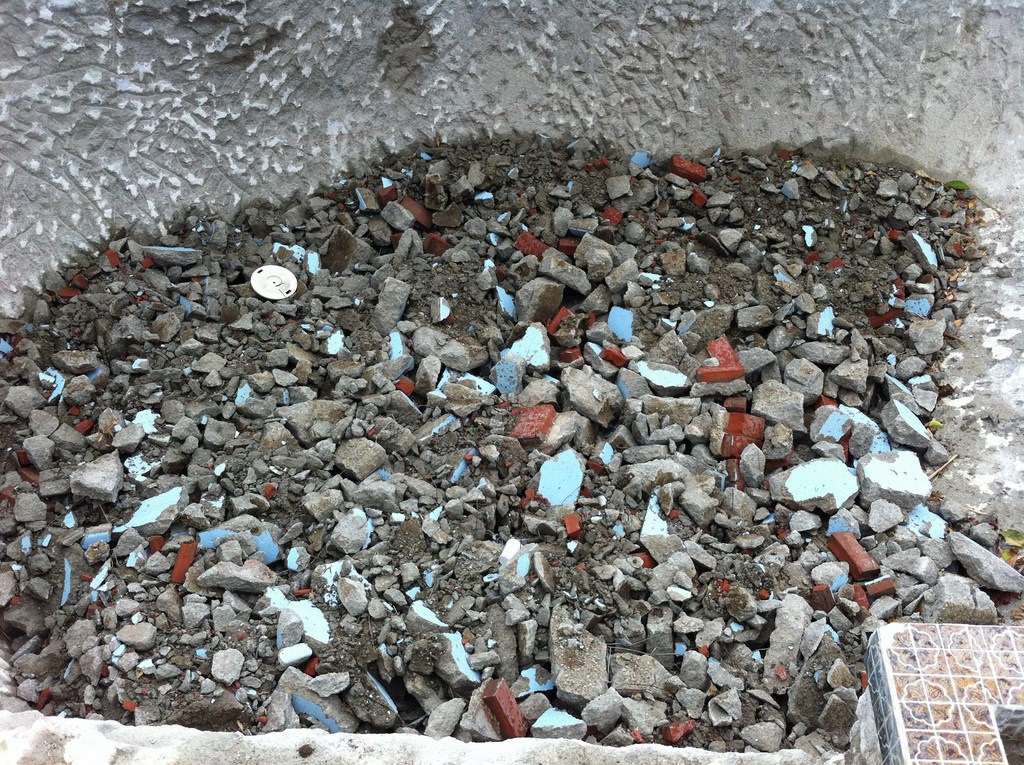Raising the Floor

In a great many of the renovation projects I come across, one part of the program involves raising the floor in the deep end of the pool to create the classic play-pool contour with a deeper area in the middle and shallower sections on both ends. This retrofit brings these pools into line with one of the most popular features of today’s new pools, so many of which are set up for pool volleyball and other vigorous games.
The great thing about these sporty pools is that the shallower ends have a minimal effect on classic pool activities such as lap swimming. Moreover, raising the floor reduces water volume (and therefore water use and chemical consumption) and has the nice side effect of making the water warmer. No diving will be allowed, of course, but I don’t see that as a big issue and can’t think of the last time I installed a diving board on a typical backyard pool.
But getting back to renovations for the moment, there is a right way to raise the floor – and the contractor involved in the project discussed here definitely had the wrong one in mind.
The scenario: The contractor (using the term loosely) who had been brought in to update this pool demolished the existing concrete decks and the brickwork around the pool. Instead of hauling it away (as would have been the right thing to do), he simply dumped it all into the deep end of the pool, painted bricks included, and made no attempt to consolidate or compact the material. The plan was to encase everything under a thick layer of new gunite/concrete, never to be seen again – or at least that seems to have been the contractor’s basic assumption. There was no intention to install any steel to tie the original floor to the new sub-floor.
| This is one way to dispose of demolition rubble — but it’s the wrong way. Instead, the contractor should clear away this debris, dowel new steel into the existing shell and then place and compact an appropriate fill. Short cuts are an invitation to failure! |
The debris material was in chunks ranging in size from quite large to very small; the chunks also represented a range of materials, from plaster, stucco, tile and concrete to the odd plastic component and a good measure of dirt and gravel. As indicated above, none of this had been compacted, and I can only imagine what would have started happening as this layer of material settled and shifted over time.
The fix: The right approach here would require the contractor to clear away all of the material in the bottom of the pool and follow established procedures for doing the job the right way.
First, holes for reinforcing bars must be drilled into the existing shell in a pattern and at intervals recommended by the project engineer. (Where I work, those holes must be examined by a deputy inspector before the rebar is set in place with epoxy.) Once the steel is in place and has been tied into an appropriate curtain, it’s time to fill the bottom with a load of solid concrete, gunite or a sand slurry.
If the void to be filled is deep, it’s permissible to use a fill material – but it must be of a uniform size and must be compacted in stages (or lifts) as the space is filled to the level where the concrete takes over.
Lesson Learned: It’s too easy to make assumptions about the integrity and strength of concrete, and it’s clear in this case that the contractor figured a mass of concrete poured over a heap of rubble would be just fine. And it might have been fine – but only for a while; before long, the concrete would start to crack and the inadequacies of the slipshod approach would be discovered.
As always, there are right ways and wrong ways to renovate details of existing pools, and it’s not too difficult to ask a few well-placed questions to find out if you’re headed in the right direction!
Scott Cohen is president and supervising designer of The Green Scene, an outdoor design/ construction firm in Chatsworth, Calif. Past articles in the Lessons Learned series have been compiled in his book, The Candid Contractor. He also provides consultation for clients nationwide and gives seminars on designing landscapes, swimming pools and outdoor kitchens. For more information, go to www.greenscenelandscape.com.











